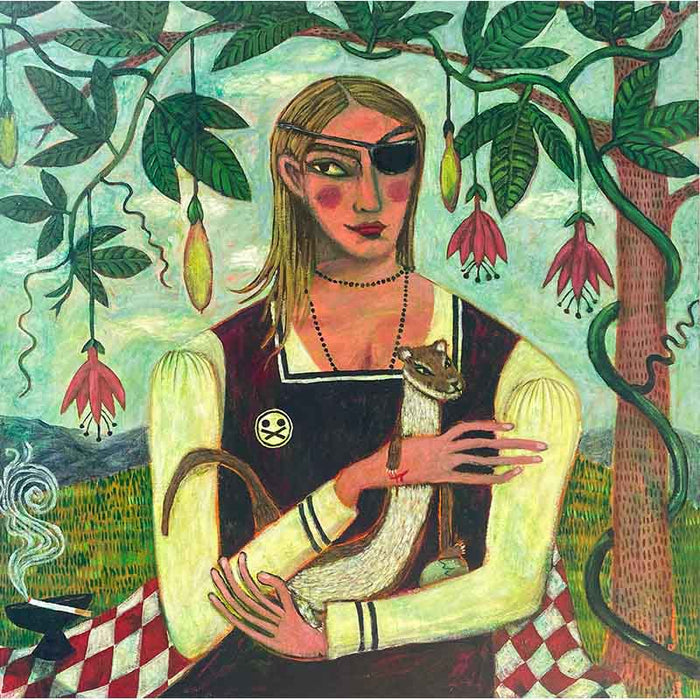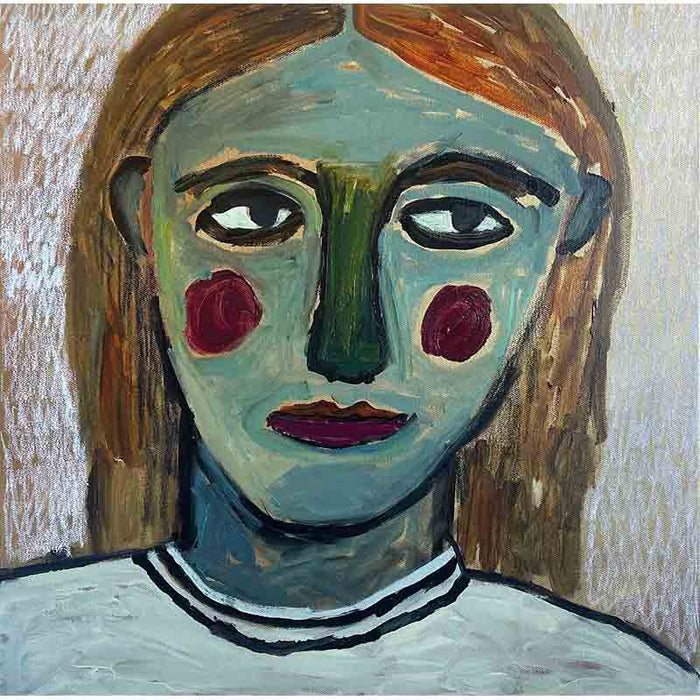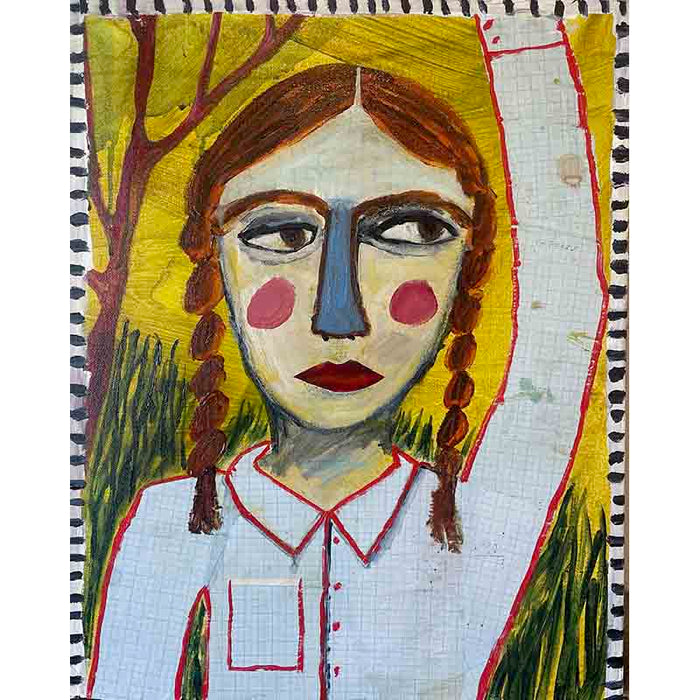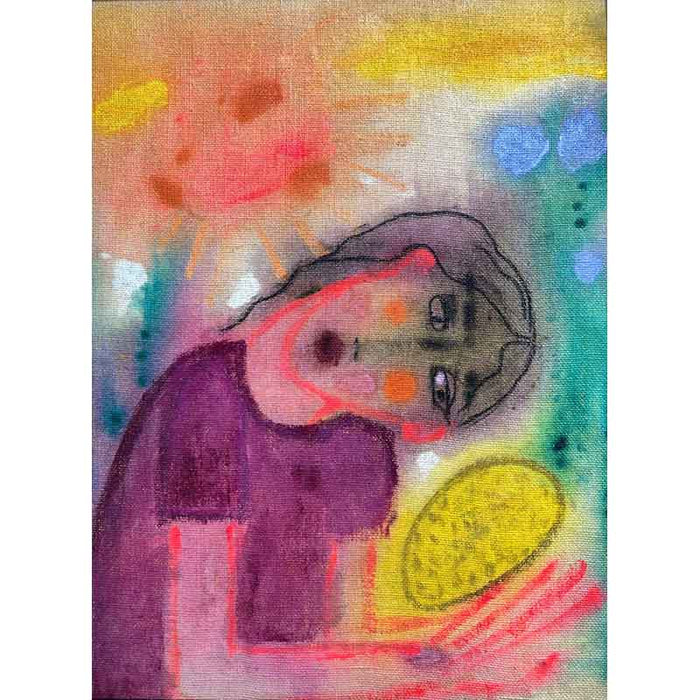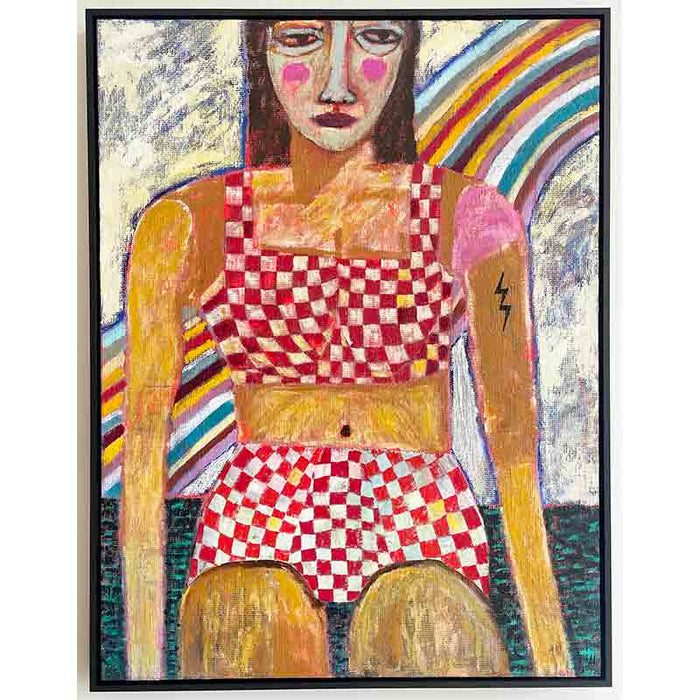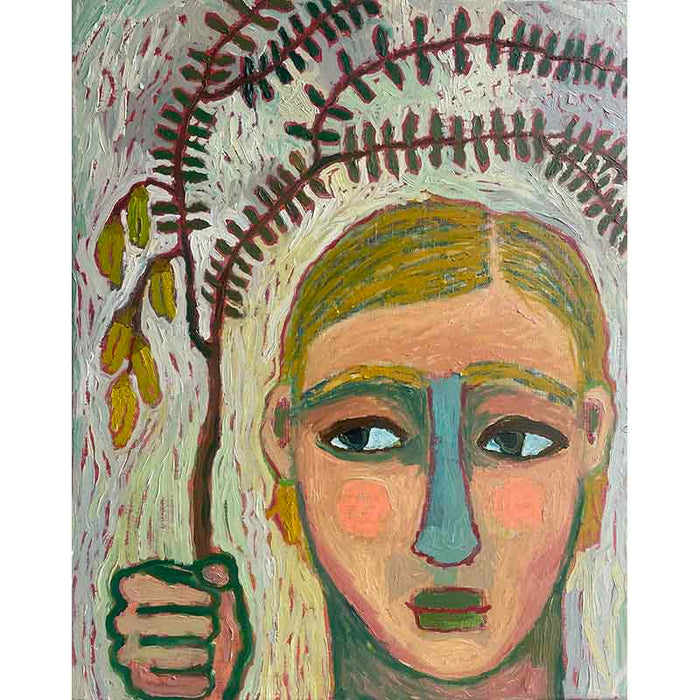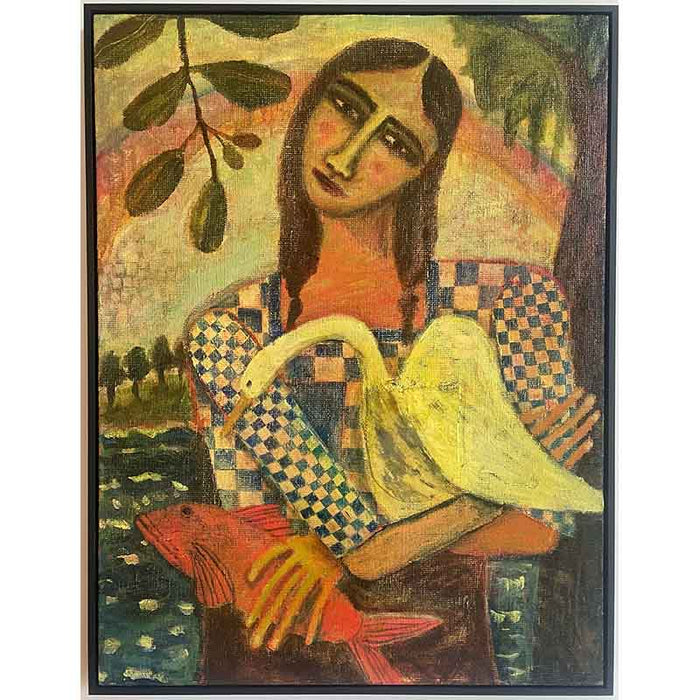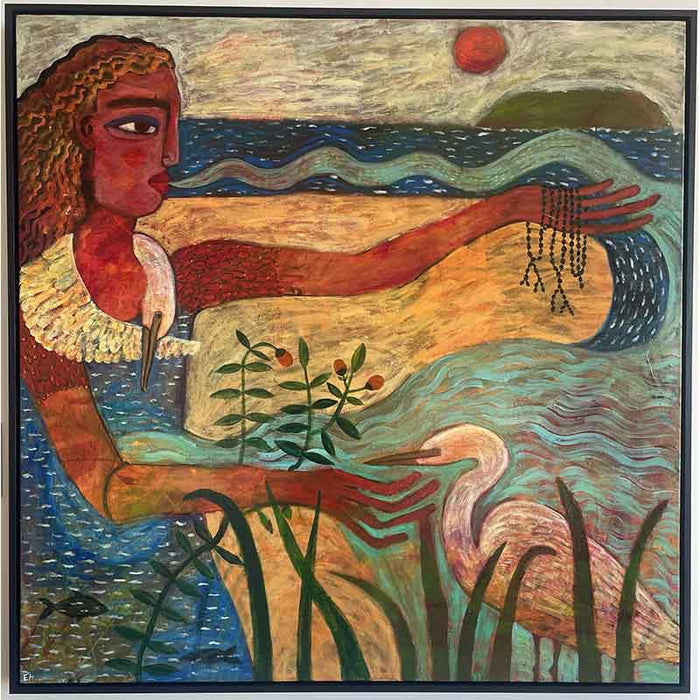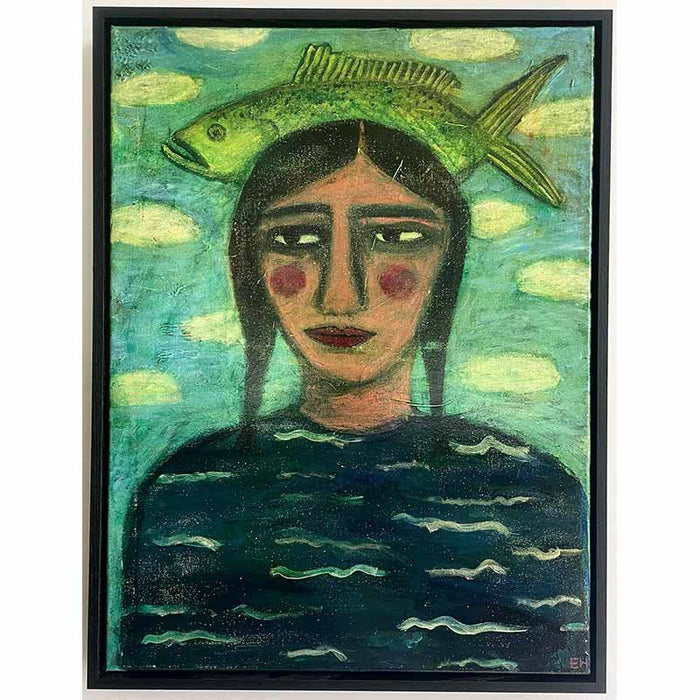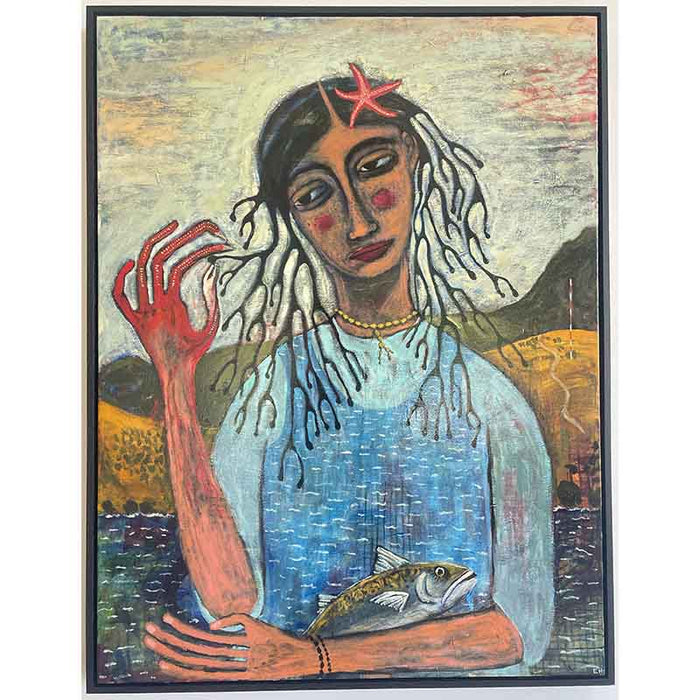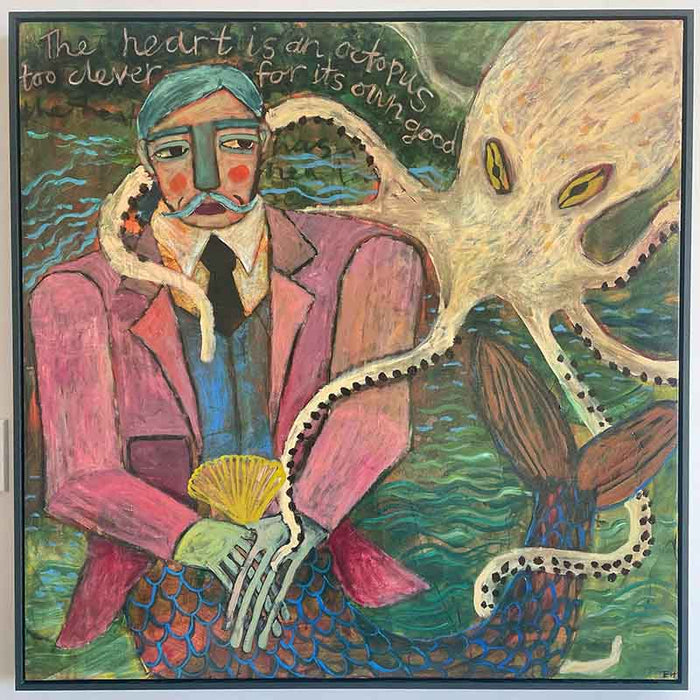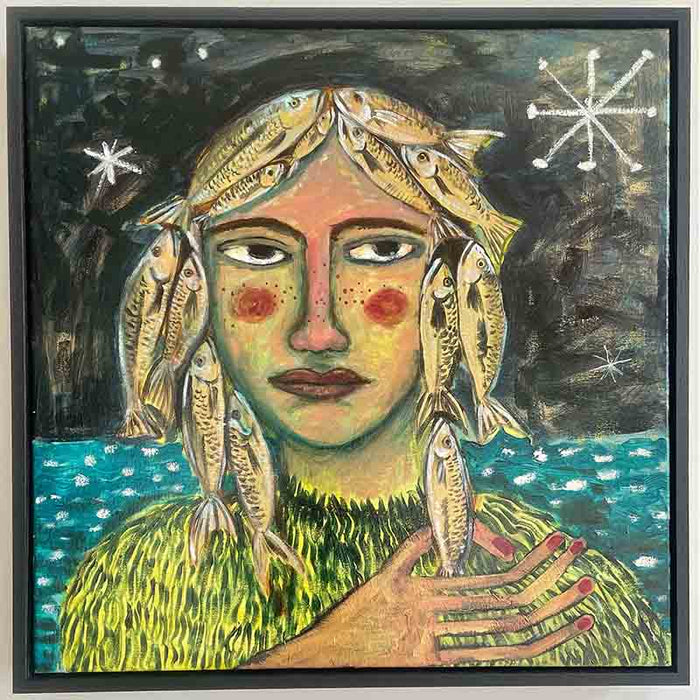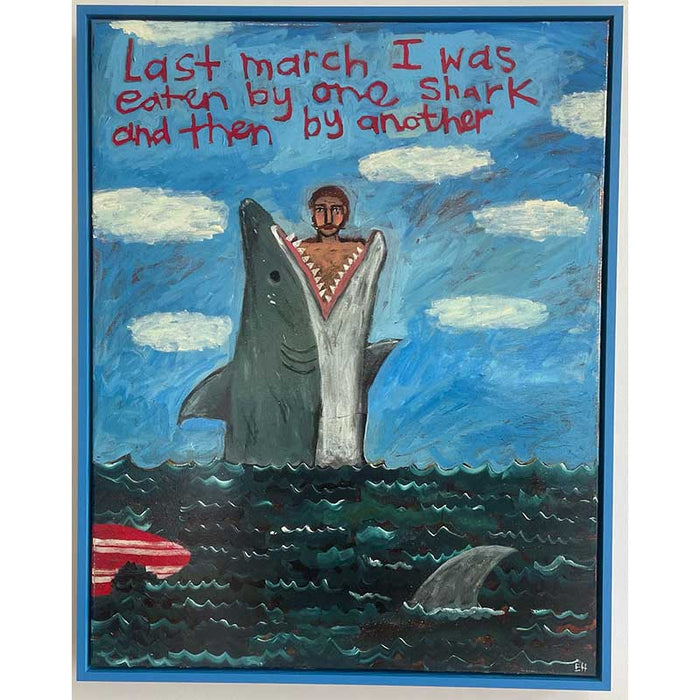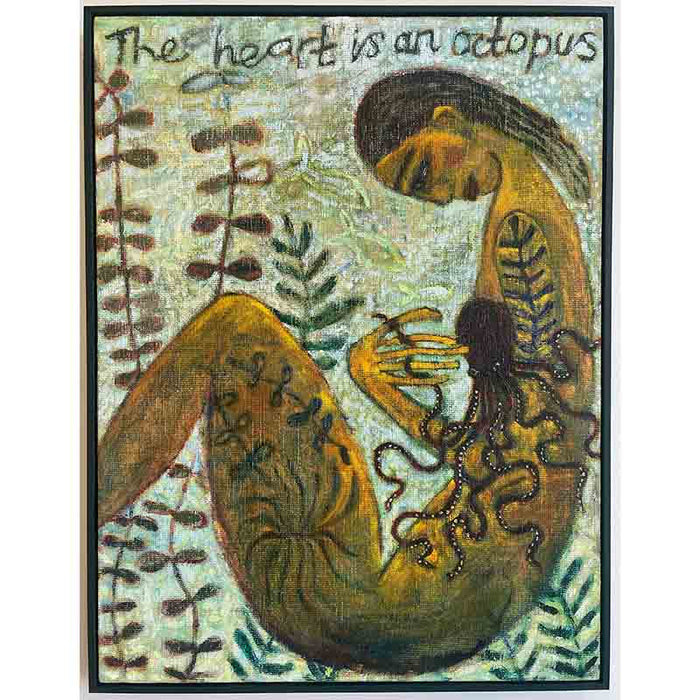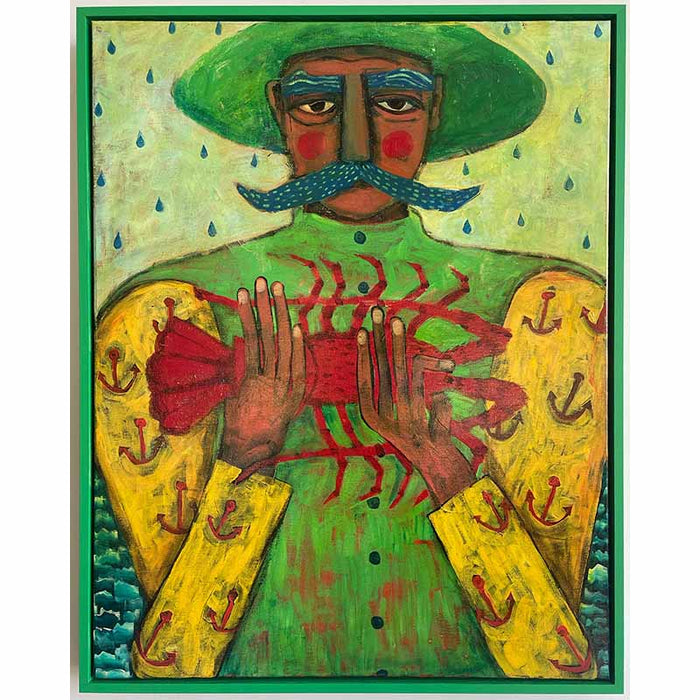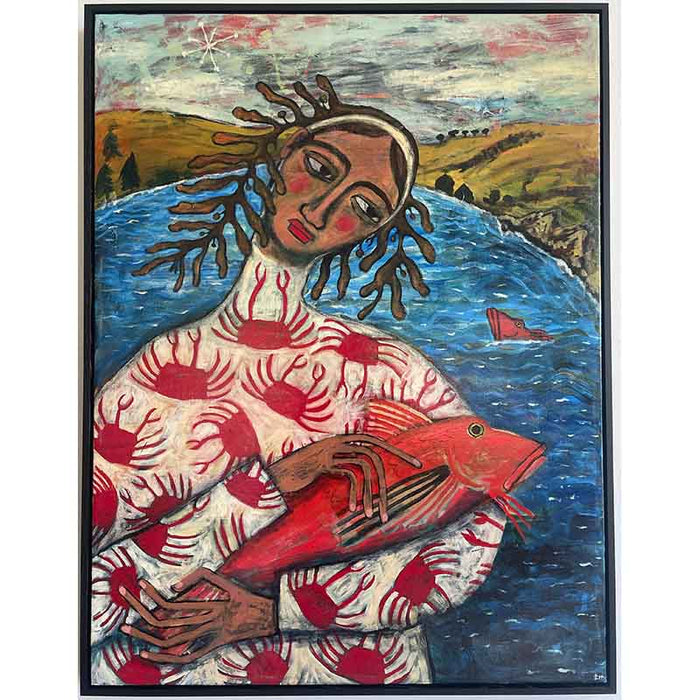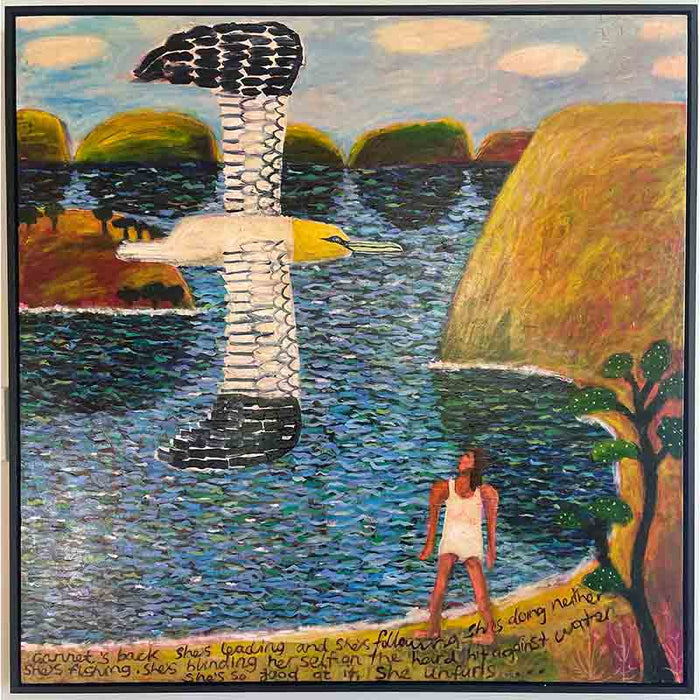The world Emma Hercus paints celebrates ‘Our Place’. The songs she hears upon its shores and the care of its creatures. The everchanging ocean and its view from her home in Plimmerton, Wellington serve as constant reference points in her paintings. Nature, day and night, the elements – sun, clouds and rain, the birdlife and their playful antics all play a part in the painterly narrative woven by Emma Hercus.
Wellington based artist Emma Hercus has been making waves across NZ with her wistful, complex, and vibrantly colourful paintings. An artist who is intimately in touch with her inner child with a wellspring of images and ideas, unfettered by conditioning or self-consciousness. Her work is the antidote to everything conventional and refined.
Hercus makes folkloric style observations of her daily life, painting the people, places, and objects that surround her in a decorative style bustling with animals, plant matter and patterns, the energy imbued in these paintings demand you visually attend to them. Much of her art is made in response to her coastal rural environment, along with personal memories and recent events which she collapses together into multi-layered images.
Her playful style is difficult to pin down. Hercus is known for her stylised figurative paintings, which often depict imaginative scenes and mythical characters. She highlights their quirks and idiosyncrasies, often emphasizing their fragility. Her paintings can be delicate, enchanting and intellectually complex as well as gritty and mentally challenging.
Starting with any material - acrylic, collage or previously coloured surfaces - her ideas grow as she works, employing layers of thin washes and scumbling in a palette frequently dominated by pink and blue tones. It has the potential to develop in unforeseen ways, to accrete and conjoin as the work progresses. “It is like solving a puzzle as it goes along,” she explains.
Hercus’s idea of composition and space is like a wild garden. She doesn’t care about contours or readability, painting with her fingers, and all manner of tools. It’s all about experimentation, both in subject and execution. There are no rules. She approaches painting on her own terms, deviating from current contemporary artists. It takes courage to do what no one else is doing. There is evidence of self-belief, allowing her art to follow its own intuitive logic with a distinctive style and approach.
Her thoughts about nature are imaginative and refreshing. Surreal images of intriguing figures, a cast of creatures who sometimes look only part human, taking on their surroundings, appear in transit between this world and the next. The subject matter of a painting titled ‘I am the sea and the sea is me’ is a girl with a fish, but the content holds a darker matter, pulling us in. It offers an opportunity for reflection and care. The girl’s facial expression mirrors that of the fish as she delicately holds a curl of her seaweed hair. There is an awkwardness and vulnerability – a sheer visual force. What is being expressed, what else is hidden behind the narrative? Exceptional works of art do not depend on explanation. In fact, Hercus prefers not to offer any explanation, instead leaving the viewer to find their own meaning. Titles add further layers to the work, encouraging us to search deeper for stories hidden within.
Hercus enjoys collaboration. ‘The Heart is an Octopus’ 2023 exhibition at Railway Street Gallery + Studios involved friend and poet Michaela Keeble, bouncing ideas off each other and sharing how the sea intrigues us as individuals. Keeble’s poem titled ‘like an Octopus’ became the platform for this body of work.
With Hercus’s upcoming show at Railway Street Gallery this year, there is potential for another collaboration. This time with potter Jenn Leov. “We want it to be about growth and renewal, how nature repeats many patterns and celebrate the joy of a garden and immersing oneself in it.”
Inspired by powerful figurative paintings of local and international artists such as Star Gossage, Peter Doig and Henri Rousseau, Hercus continues to build her distinctive style, bringing in elements redolent of folk art, naïve art, and allegorical art. By re- introducing the values of the imaginary into the art of this period, she adds a valuable resource to contemporary living, a refuge from current global issues and increased anxiety.
Essay by Fiona Cable MFA 2024

